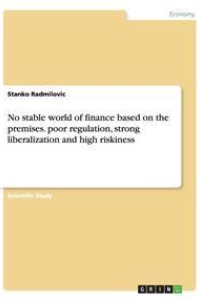
Liknande böcker
Analysis and Comparison of Company Valuation Methods in Germany : Based on the Discounted Cash Flow Approach and the German Income Approach
Bok av Jaqueline Hortlik
Bachelor Thesis from the year 2015 in the subject Business economics - Business Management, Corporate Governance, grade: 1,8, University of Applied Sciences Essen, course: International Finance, language: English, abstract: Estimating the value of a company is an important pre-requisite for optimal decision-making in upper management, for example when a company prepares to acquire another firm. The significance of valuation is rooted in the fundamental difference between price and value. Both can fall apart, as buyers and sellers individually attempt to take advantage of a sale or purchase transaction. The potential buyer considers the value of a company to be the upper limit for the price that he is willing to pay, whereas the seller considers the value of the same company to be the lower limit for the price that he is willing to receive. Not surprisingly, price and value of a company can differ significantly, and this is where company valuation comes into play. In the late 1980s, a period characterized by increasing internationalization and consolidation due to various liberalization measures, a large number of mergers and acquisitions took place, including many hostile takeovers.One of the reasons for this takeover wave was that investors increasingly attempted to identify companies with so-called value gaps, i.e. differences between a company's value and its expected stock value. In order to close this gap, methods of how to valuate a company became more important to companies, investors as well as national fiscal authorities. In this context, corporate shareholders have come to be more demanding on creating a sustainable return for shareholders and maximizing the value of a company than strictly maximizing profit, a strategy which had dominated before. The shareholder value approach introduced by Alfred Rappaport included a new orientation on generating maximized returns to share-holders by dividend distribution and an increase in stock prices of the company. Since then, the importance and practice of valuation has increased constantly.Investors need to know both how much return they will receive for their invested capital. and what the alternative investment opportunities would be.Until today, a large number of valuation approaches and methods have been invented by researchers and practitioners. Although this has given companies a larger freedom to carry out valuations, it has also led to more complexity, and a challenge to find the 'best' method, because as a matter of fact, some approaches are more appropriate than others - depending on the company, the available information and the concrete objective.







